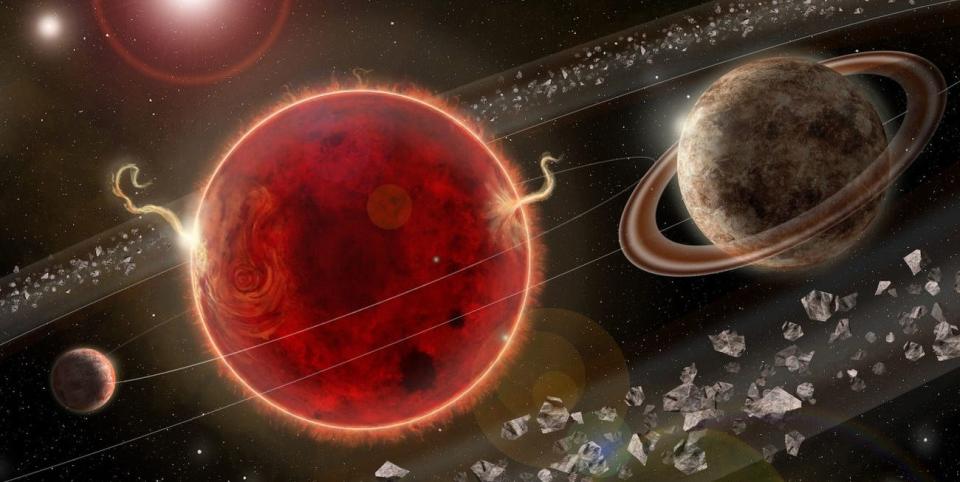Is There a Hidden 'Super-Earth' Exoplanet Orbiting Our Closest Stellar Neighbor?

Scientists have found evidence of a new exoplanet candidate orbiting our closest stellar neighbor, Proxima Centauri.
This exoplanet candidate, Proxima c, likely has a mass six times that of Earth.
But it's unlikely that life would survive on the planet, given its frigid temperatures.
The red dwarf star Proxima Centauri is our closest stellar neighbor; the star system is a measly 4.2 light years from Earth and can be seen with the naked eye. Because of this proximity, the system has long been a target of scientific inquiry and intrigue. In 2016, researchers discovered Proxima b, which has a mass similar to Earth's and an orbital period of 11 days, within the star system's habitable zone.
Even though it has been found in the habitable zone—that planetary sweet spot where experts believe liquid water could exist—Proxima b is tidally locked, meaning only one side of the planet faces its sun.
Now, there's a new exoplanet candidate in town: Proxima c. Evidence suggests that it has a mass roughly six times that of Earth and orbits its star once every 5 years, according to a research published Jan. 15 in the journal Science Advances.
But because Proxima Centauri is a relatively dim star, Proxima c is likely to be an extremely frigid world. Temperatures on the planet could dip as low as -388 degrees Fahrenheit, Space.com reports. It's unlikely we'd find life on such a chilly world.
An international team of researchers analyzed 17 years worth of data from the HARPS (High Accuracy Radial Velocity Planet Searcher) and the UVES (Ultraviolet and Visual Echelle Spectrograph)—both of which are installed on European Southern Observatory telescopes in Chile. The scientists noticed that Proxima Centauri experienced an unexplained wobble that could be explained by the gravitational tug of another planet.
For now, Proxima c remains only an exoplanet candidate as scientists train additional planet-hunting instruments on the star system to confirm the object's existence. But such a startlingly discovery so close to home would show just how much more there is to learn about the stars lying in our cosmic backyard.
You Might Also Like

 Yahoo News
Yahoo News 